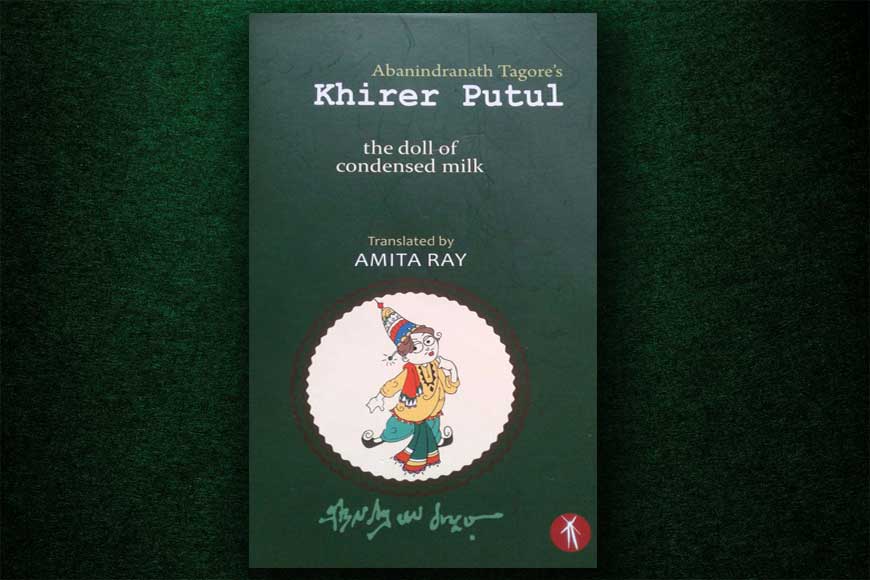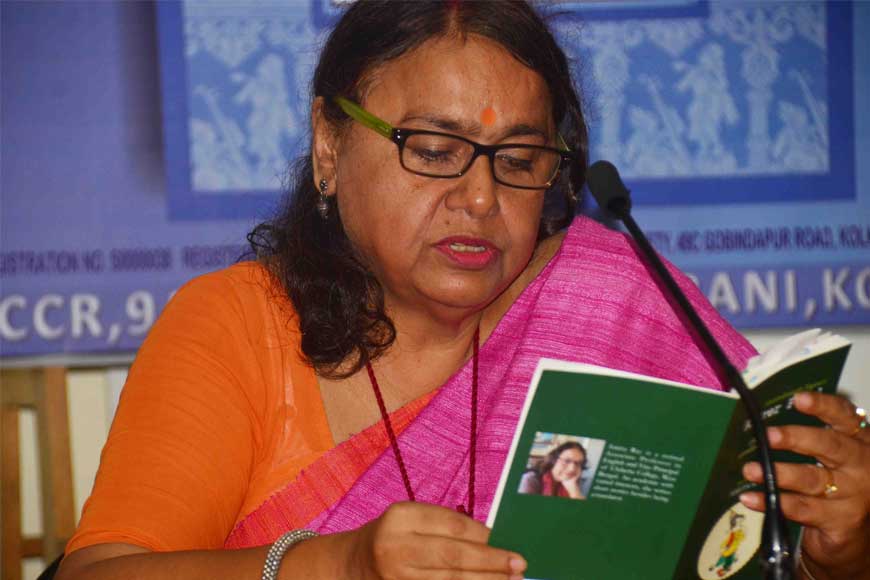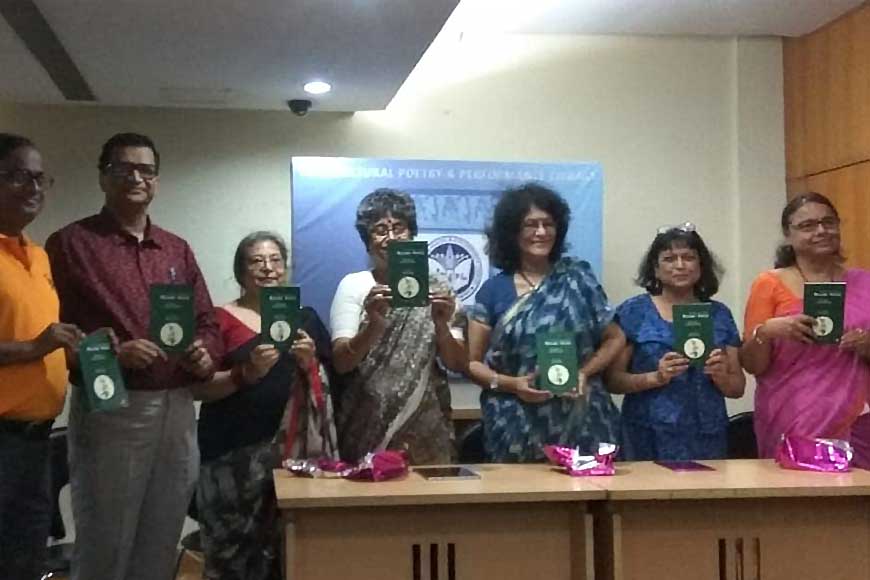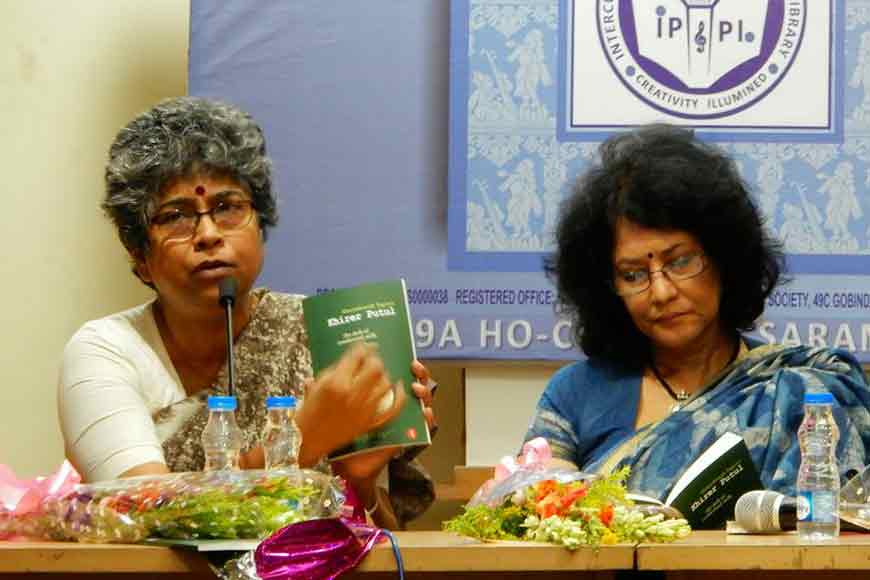Wish to read Abanindranath Tagore’s KhirerPutul in English?

Amita Ray is Retired Associate Professor of English, a poet and author. Her translation of Abanindranath Tagore’s Khirer Putul was recently launched as a book in Kolkata
• What attracted you to Abanindranath Tagore’s Khirer Putul and why did you wish to translate it?
Khirer Putul is an eternal favourite of the Bengalis. To those born some decades back from now it evokes sweet memories of happy reading which transported them to a world of fantasy. I am no exception and had read and re-read it with equal zest. Post retirement when I kept myself engaged in writing short stories and essays, the thought of translating crossed my mind. At the outset I did not zero in on juvenile literature. Hence translation of Khirer Putul didn’t happen as a calculated decision. It was while I was reading out Abanindranath Tagore’s Khirer Putul to some children in an N.G.O. that I caught the glitter of excitement in the eyes of the kids and instantaneously took the decision of translating it.
• Why did you choose Abanindranath Tagore, after all he is quite an offbeat writer?
The instantaneous decision of choosing to translate Khirer Putul was seriously contemplated before the actual act of translation. As you say he is quite an offbeat writer, probably in the sense that his stories don’t fit in the present trend of juvenile literature. The present forms of this genre and other popular entertainment fail to feed the pristine imagination of the children as they used to do in bygone days. And it was precisely this point which I thought would gain an edge and attract the young to this story.

• How good will translations of children’s literature do? What is your opinion on this? Is it the need of the hour? If so why?
Translation of children’s literature in our country is indeed the need of the hour. Translation of children’s literature into English from regional languages and encouraging children to read them will surely pave the path to cultural bonding across states and consequently lead to national integration. This needs to be nurtured from a tender age and is best done through assimilation from books which they enjoy reading.
Closer home we are all aware of the proliferation of English medium schools and the propensity for parents to send their children to such schools irrespective of the standard these schools profess to maintain and actually do maintain. Cultural colonization is ubiquitous in all activities and the field of education is not spared. Decades back a child was initiated into the arena of learning with Hate Khori; when the child was guided into scrawling the first letter of Bangla Swarbarna. Even if the child attended an English medium school, learning and communication in the vernacular language was encouraged simultaneously. ‘A’ for Apple’ coexisted with ‘Oy ajagar aschhe tere’ in the initial tutoring of a child. Those were the times when Bengali children avidly read Upendrakishore Roy Choudhury along with Enid Blyton. But the scenario haswoefully changed with the onslaught of linguistic imperialism and inroads of technology. Young school going children do not feel comfortable in Bangla and even if they can speak Bangla, they are averse to reading Bangla books. It is for these children that translation of juvenile literature into English is needed. But it just doesn’t end with translating good works in Bangla. Parents, teachers and elders must come forward to foster in the children a love for these books. The school library should keep a good stock of such books.

• As a translator what is your biggest challenge?
Translating is a demanding task. The greatest challenge that a translator faces is to render the original work in the target language as pleasantly readable while retaining the inherent style, rhythm and essence of the original text. Paradoxical though it may sound, it is difficult to be faithful as a translator without being a little unfaithful to the original text. It is because the linguistic parameters of the two languages like grammar, language functions etc. differ, equivalents of vocabulary might have separate connotations and even punctuations speak differently. As for this text Khirer Putul, it is a culture specific fairy tale inspired by traditional Bangla folk lore. It is replete with fantasy episodes steeped in local culture and customs the flavour of which had to be captured undiluted. So, replicating it and at the same time upholding the innate flavour proved a daunting challenge.
• Abanindranath Tagore is one of the least explored writers of Bengal. How do you wish to bring him to the children of today?
Abanindranath Tagore has been translated by a few writers but not quite widely explored. Some of his books have not been translated yet. The popular books Khirer Putul, Rajkahini, Buro Angla have been translated, while some others equally engrossing need the attention of translators for the benefit of the children today.

• Any plans to translate any other Bengali writers?
Yes, I wish to translate Bankim Chandra Chattopadhay, the father of Bangla literature. Though highly acclaimed, he is another author whose works need to be brought more into the limelight of the translation world. Though I think it would be quite a formidable venture, I for my part would like to work on a couple of them and have already started with one.










